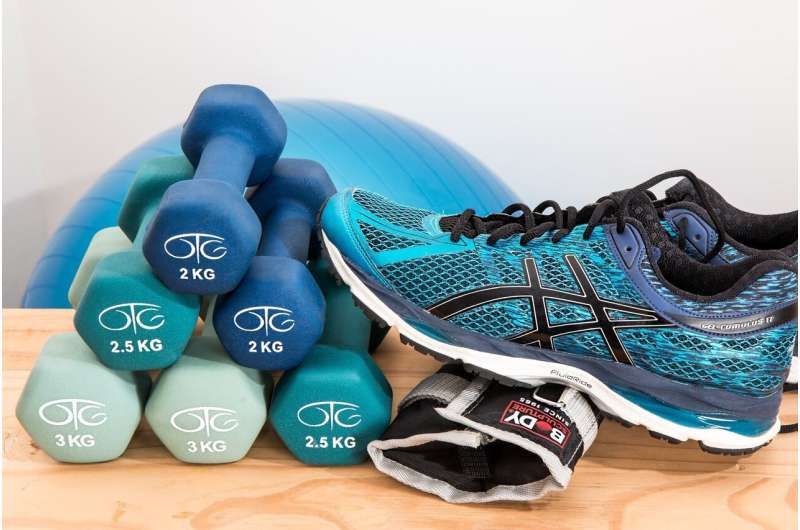This article has been reviewed according to Science X's editorial process and policies. Editors have highlighted the following attributes while ensuring the content's credibility:
fact-checked
peer-reviewed publication
trusted source
proofread
Kidney patients benefit from physical exercises, finds study of 21 dialysis centers

Patients who engage in light exercise while undergoing dialysis are physically fitter and are admitted to hospital less frequently than those who do not. These are the findings of a large-scale study conducted by a consortium led by the Technical University of Munich (TUM). The researchers believe that exercise programs should be offered to dialysis patients as standard.
Around 80,000 people in Germany have such severely impaired kidney function that they require dialysis several times per week. Many also suffer from additional health issues such as diabetes and heart disease. "The limitations imposed by these diseases, and the time required for dialysis, often mean that those affected engage in little physical exercise. We wanted to change that," says Martin Halle, Professor of Preventive and Rehabilitative Sports Medicine at TUM.
Personalized exercise plans
Approximately 1,000 patients at 21 dialysis centers in Germany took part in the study, which has been published in the NEJM Evidence. "We mounted one of the world's largest studies on physical activity in the context of specific diseases," says Martin Halle. Data from health insurance providers was consulted to ensure that the participant pool was representative of dialysis patients in Germany in terms of aspects such as age, gender and overall health.
Over a 12-month period, half of the study participants completed accompanied exercise sessions at least once and ideally three times per week alongside their dialysis, while others were subject only to medical monitoring. These sessions included 30 minutes of endurance training with a bed-cycle ergometer and a further 30 minutes of exercises with weights, resistance bands and balls. The exercises were tailored to each patient's ability.
Improvements in standardized testing
After a year, the health of the study's active participants had improved significantly. This included completing more repetitions in a one-minute sit-to-stand test and walking further in six minutes than at the start of the study. In the control group, these values were even lower at the end of the study period than at the outset.
"This type of standardized testing may admittedly not appear to be particularly reflective of everyday life," says Martin Halle. "However, the results demonstrate tangible improvements in quality of life and autonomy. For example, the participants were able to stand up from a chair at home without assistance, which was not always the case beforehand."
There are other signs of the training program's positive effects: participants who completed regular training sessions spent an average of two days in hospital during the study, compared to an average of five days for the control group.
Low costs per training unit
"To my mind, the results speak for themselves," says Martin Halle. "We were able to improve the participants' health and also reduce the costs to the healthcare system with relatively little outlay." The researchers' figures suggest that the costs for personalized training would be around €25 per session per person.
The DiaTT (Dialysis Training Therapy) consortium submitted the final report to the Federal Joint Committee (Gemeinsamer Bundesausschuss—G-BA), which had financed the study through its Innovation Fund (Innovationsfonds). This committee will ultimately determine whether this training is offered to all dialysis patients with statutory health insurance in Germany.
"I hope our exercise program will become standard in statutory health insurance," says Martin Halle. "Our study shows how important it is to adopt a holistic view of health, especially when it comes to elderly and infirm patients. While high-tech medicine is important, it can only achieve its full potential in combination with other fields, such as preventive medicine." The study participants will continue to be monitored in future to help researchers learn more about the effects of exercise over the long term.
More information: Kirsten Anding-Rost et al, Exercise during Hemodialysis in Patients with Chronic Kidney Failure, NEJM Evidence (2023). DOI: 10.1056/EVIDoa2300057



















